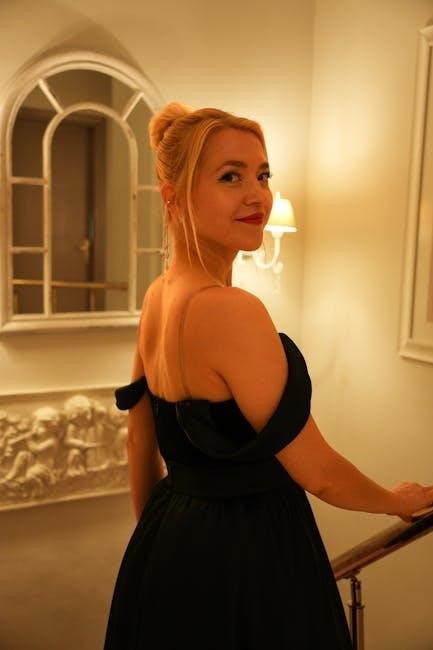
Understanding Your Hair Type and Face Shape
Identify your hair type (straight, curly, or wavy) and texture (fine, medium, or coarse) to determine the best hairstyles for you. Similarly, understanding your face shape (oval, round, square, or heart) helps in choosing flattering styles that balance your features and enhance your natural beauty. This knowledge is key to finding a hairstyle that complements your unique characteristics and boosts confidence.
Identifying Your Hair Type
Understanding your hair type is crucial for choosing the right hairstyle. Hair types include straight, curly, and wavy, each with unique characteristics. Straight hair lacks natural curl, while curly hair forms defined spirals, and wavy hair combines elements of both. Texture, such as fine, medium, or coarse, also plays a role. To determine your type, wash your hair and let it dry naturally without styling products. This will reveal your hair’s natural texture and pattern, helping you select styles that enhance its inherent qualities and improve manageability.
Determining Your Face Shape
To determine your face shape, measure your forehead, cheekbones, jawline, and face length. Oval faces are longer than wide, with balanced features. Round faces are as wide as they are long, with soft angles. Square faces have equal width and length, with strong jawlines. Heart-shaped faces are wider at the temples and narrow at the chin. Knowing your face shape helps in selecting hairstyles that flatter your features, creating a balanced and harmonious look that enhances your natural beauty and personal style.
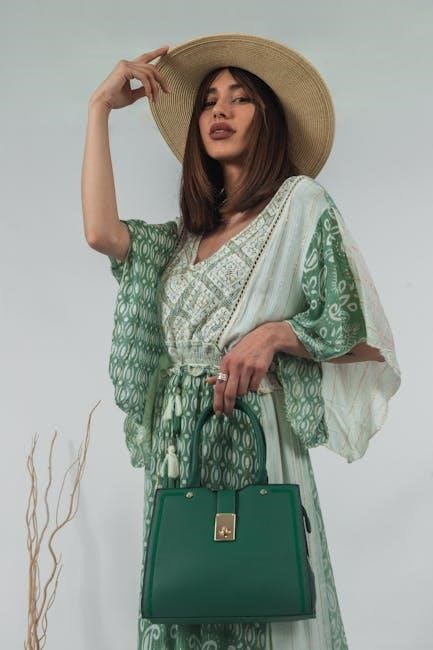
Popular Hairstyle Trends
Current trends include short, edgy cuts like bobs and pixies, while long hair features layered, flowing styles. Updos remain popular for occasions, and synthetic styles offer versatility.
Current Trends for Short Hair
Short hair trends include sleek bobs, choppy pixie cuts, and asymmetrical styles. Natural textures are embraced, with subtle layers for movement. Bold, vibrant colors and undercuts add edgy flair. For versatility, many opt for styles that can be styled smoothly or with volume. Short haircuts are perfect for those seeking low-maintenance yet fashionable looks. These styles highlight face features and offer a modern, chic aesthetic for any occasion.
Current Trends for Long Hair
Long hair trends emphasize flowing, natural looks with subtle waves and minimal styling. Layered cuts add volume and movement, while balayage highlights create dimension. Braids, twists, and ponytails remain popular for versatility. Glass hair, characterized by sleek, shiny finishes, is also in vogue. Long hair offers endless styling options, from effortless cascades to polished updos, making it a timeless choice for those who enjoy experimenting with their look.
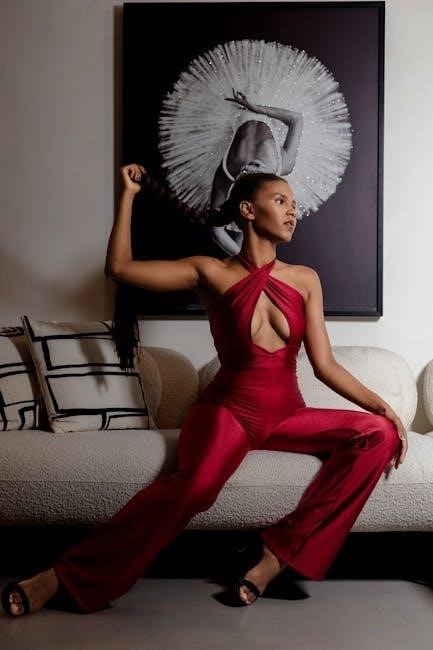
Haircare and Maintenance
Proper haircare involves using the right products, regular trims, and protective styles to maintain health and appearance. A consistent routine ensures optimal results and prevents damage.
Essential Haircare Products
A good conditioner, sulfate-free shampoo, and leave-in conditioner are must-haves for maintaining healthy hair. Heat protectants and hair oils like argan or coconut oil nourish and protect strands. For curly hair, curl activators and creams enhance definition, while for straight hair, smoothing serums reduce frizz. Synthetic hair requires gentle, sulfate-free products to maintain its quality and appearance. These essentials help in achieving and preserving your desired hairstyle while promoting overall hair health and longevity.
How to Properly Care for Synthetic Hair
Use mild, sulfate-free shampoo and conditioner to prevent damage. Avoid harsh chemicals or heat styling tools, as they can degrade synthetic fibers. Gently wash synthetic hair with cold water, pat dry, and avoid soaking. For styling, use a heat protectant if necessary, but synthetic hair typically shouldn’t be heat-styled. Allow it to air dry and store in a cool, dry place away from direct sunlight. Proper care extends the lifespan and maintains the natural look of synthetic hair.
Hair Accessories Guide
Explore the world of hair accessories, including clips, barrettes, and headbands, perfect for updos, decorative styles, and enhancing various hairstyles with ease and elegance.
Best Accessories for Updos
For stunning updos, consider using hair clips, barrettes, headbands, or pins to secure and decorate your style. Bobby pins are essential for holding strands in place, while decorative clips add elegance. Headbands can elevate a simple bun or ponytail, and hair ties with charm details offer a fashionable touch. Choose accessories that complement your hairstyle and occasion, ensuring durability and comfort. These tools help create polished, long-lasting updos perfect for weddings, formal events, or everyday looks.
Decorative Accessories for Various Hairstyles
Elevate your look with decorative hair accessories like beads, sequins, or metallic accents for braids and twists. Scarves and fabric wraps add a bohemian flair to loose styles, while ribbons or flowers create a romantic vibe. Glitter clips and rhinestone pins are perfect for formal events, adding a touch of glamour. These accessories not only enhance your hairstyle but also reflect your personal style, making each look unique and eye-catching for any occasion or cultural inspiration.
Step-by-Step Barber Shop Guide
Plan your visit, discuss your desired style with the barber, and ensure clear communication for a precise cut. Proper preparation and after-care maintain the look.
How to Prepare for Your Barber Visit
To ensure a successful barber visit, research styles that suit your hair type and face shape. Bring reference images to communicate your preferences clearly. Knowing basic barbering terminology helps in describing what you want. Arrive with clean, damp hair for an accurate cut. Be prepared to discuss your lifestyle and preferences to get a tailored look. Clear communication ensures satisfaction and a personalized grooming experience.
Knowing Barbering Terminology
Familiarize yourself with key barbering terms to communicate effectively. Terms like fade (gradual hair length reduction), undercut (cutting underneath hair), and pompadour (volume on top) are essential. Understanding phrases like scissor-over-comb or clipper cut helps specify your desired style. Knowing these terms ensures your barber understands your vision, leading to a precise and satisfying haircut tailored to your preferences and style goals.
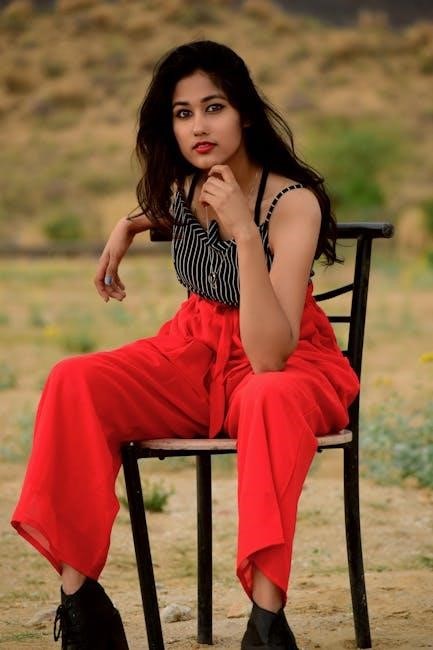
Cultural and Historical Hairstyles
Hairstyles reflect cultural identity and historical periods. From ancient braided styles to 1870s big curls, each era showcases unique techniques, symbolizing status, spirituality, and societal norms.
Historical Context of Braids and Twists
Braids and twists have deep cultural roots, dating back to ancient civilizations. In Africa, they symbolized status, spirituality, and community bonds. During the 1870s, these styles were adapted in the West, often using fake hair for volume. Today, they remain popular, blending tradition with modern flair. Their versatility and historical significance make them timeless choices, connecting past and present while celebrating cultural heritage.
Protective Hairstyles
Protective styles like braids, twists, and buns shield hair from damage, reducing breakage and promoting growth. They are ideal for minimizing hair manipulation and environmental stress.
Popular Protective Styles for Hair Health
Popular protective styles include braids, twists, and buns, which minimize hair manipulation and reduce breakage. These styles promote hair growth by shielding strands from environmental stress. Crochet braids and wigs offer damage-free options, while updos like chignons and puff styles protect ends. Regular use of these styles can improve hair health by preventing over-styling and chemical damage, ensuring stronger, longer hair over time. They are versatile and suitable for various hair types and textures.
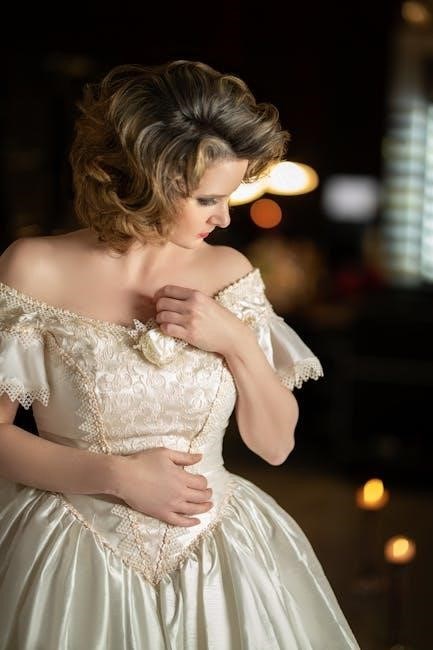
Haircuts for Kids
Kids’ haircuts should be age-appropriate and easy to maintain. Styles like fades, trims, and undercuts are popular, while softer cuts suit younger children. Safety and comfort are key.
When to Get Your Baby’s First Haircut
Most babies need their first haircut between 12 to 18 months, depending on hair growth. Look for signs like uneven ends or difficulty managing tangles. Choose a gentle stylist experienced with infants to ensure a calm experience. Keep the first visit short to help your baby get accustomed to the process. Remember, the goal is a stress-free introduction to haircuts, setting a positive foundation for future grooming.
Keeping Your Child Calm at the Hairdresser
To keep your child calm at the hairdresser, prepare them by explaining the process beforehand. Bring a favorite toy or book for distraction. Offer reassurance and positive reinforcement. Consider scheduling the appointment when they’re well-rested. Choose a kid-friendly stylist who specializes in children’s haircuts. Keep the experience short and fun, using incentives like a small reward afterward. A calm and patient approach will help your child feel comfortable and build a positive association with haircuts.
Synthetic Hair and Styling
Synthetic hair offers versatility for styling, from braids to wigs. It’s durable yet requires gentle care. Use heat-resistant fibers for styling tools and avoid harsh chemicals. Popular for its affordability and variety, synthetic hair allows for creative experimentation without damaging your natural hair. Proper maintenance ensures longevity, making it a great option for temporary or protective styles.
How to Dye Synthetic Hair
Dyeing synthetic hair requires careful steps. Use fabric or fiber dyes, as traditional hair dyes won’t work. Wash the hair first to remove dirt. Avoid using heat tools before dyeing. Apply the dye evenly, focusing on the ends. Rinse thoroughly with cold water to prevent color fading. For vibrant results, choose high-quality dyes designed for synthetic fibers. Always follow the product instructions and test on a small section first to ensure desired results.
Popular Synthetic Hairstyles
Synthetic hair offers endless styling options. Braids, twists, and sleek straight styles are favorites. Many opt for vibrant colors or natural-looking wigs. Synthetic dreadlocks and afro textures are also trending. You can achieve salon-quality looks without damaging your natural hair. Choose from curly, wavy, or straight synthetic extensions to match your desired aesthetic. These styles are versatile and perfect for experimenting with different looks. Use high-quality synthetic hair for long-lasting, realistic results that enhance your beauty.
Hairstyles for Men
Explore the latest trends in men’s hairstyles, from sleek undercuts to classic pompadours. Find inspiration for short, medium, or long haircuts that suit your style and face shape. Whether you prefer modern fades or timeless side parts, there’s a look for every man. Use online guides to discover styles that match your hair type and personal preferences. Consulting a barber can help you find the perfect cut to enhance your features and confidence.
Best Haircuts for Men with Long Hair
For men with long hair, popular cuts include the man bun, ponytail, and shoulder-length styles. Layered cuts add volume and texture, while subtle undercuts create contrast. Consider a center part for symmetry or side swept bangs for a softer look. Regular trims are essential to maintain health and prevent split ends. Use conditioner to keep strands moisturized and shiny. Experiment with braids or twists for a unique, eye-catching style. Find inspiration online or consult a barber for a custom look tailored to your hair type and face shape.
Cultural Impact of Hairstyles
Hairstyles have long served as symbols of cultural identity, status, and heritage. From braids to dreadlocks, they reflect historical, social, and political contexts, shaping individual and collective narratives globally.
The Controversial History of Certain Hairstyles
Certain hairstyles have sparked controversy due to their cultural appropriation and historical ties to oppression. For example, dreadlocks and braids, deeply rooted in African heritage, have been misappropriated and often criticized when worn by those outside the culture. Similarly, the 1870s saw the rise of fake hair and big styles, symbolizing societal pressures and exclusivity. These styles reflect broader issues of identity, power, and cultural ownership, continuing to fuel debates today.
Future of Hairstyling
The future of hairstyling lies in innovative techniques, personalized styling, and sustainable products. Emerging trends focus on technology integration, eco-friendly solutions, and diverse, inclusive designs for all hair types.
Emerging Trends in Hairstyling
Emerging trends in hairstyling emphasize personalization and sustainability. Virtual try-on tools allow clients to preview styles digitally, while eco-conscious products gain popularity. Bold colors and asymmetrical cuts are trending, alongside minimalist undercuts. Texture enhancement and natural looks are favored, blending modernity with classic elegance. These trends reflect a shift toward self-expression and environmental awareness, shaping the future of hairstyling with creativity and responsibility.